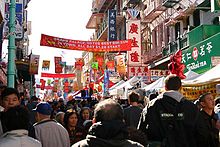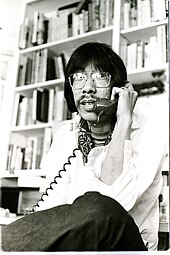
David Henry Hwang is an American playwright, librettist, screenwriter, and theater professor at Columbia University in New York City. He has won three Obie Awards for his plays FOB, Golden Child, and Yellow Face. Three of his works—M. Butterfly, Yellow Face, and Soft Power—have been finalists for the Pulitzer Prize for Drama.

The Woman Warrior: Memoirs of a Girlhood Among Ghosts is a book written by Chinese American author Maxine Hong Kingston and published by Alfred A. Knopf in 1976. The book blends autobiography with old Chinese folktales.

Li-Young Lee is an American poet. He was born in Jakarta, Indonesia, to Chinese parents. His maternal great-grandfather was Yuan Shikai, China's first Republican President, who attempted to make himself emperor. Lee's father, who was a personal physician to Mao Zedong while in China, relocated his family to Indonesia, where he helped found Gamaliel University. In 1959 the Lee family fled Indonesia to escape widespread anti-Chinese sentiment and after a five-year trek through Hong Kong and Japan, they settled in the United States in 1964. Li-Young Lee attended the University of Pittsburgh, the University of Arizona, and the State University of New York at Brockport.

Broadway Melody of 1940 is a 1940 MGM film musical starring Fred Astaire, Eleanor Powell and George Murphy. It was directed by Norman Taurog and features music by Cole Porter, including "Begin the Beguine".

Frank Chin is an American author and playwright. He is considered to be one of the pioneers of Asian-American theatre.
This is an alphabetical index of topics related to Asian Americans.
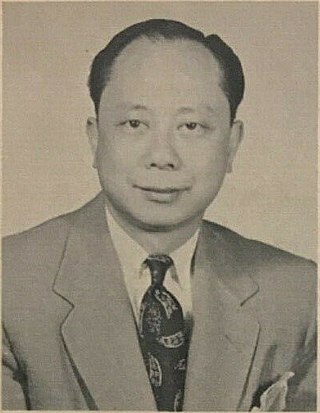
Chin Yang Lee was a Chinese American author best known for his 1957 novel The Flower Drum Song, which inspired the Rodgers and Hammerstein musical Flower Drum Song and the eponymous 1961 film which was nominated for five Academy Awards.
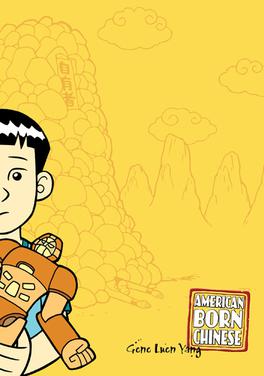
American Born Chinese is a graphic novel by Gene Luen Yang. Released in 2006 by First Second Books, it was a finalist for the 2006 National Book Awards in the category of Young People's Literature. It won the 2007 Michael L. Printz Award, the 2007 Eisner Award for Best Graphic Album: New, the Publishers Weekly Comics Week Best Comic of the Year, the San Francisco Chronicle Best Book of the Year, the 2006/2007 Best Book Award from The Chinese American Librarians Association, and Amazon.com Best Graphic Novel/Comic of the Year. It also made the Booklist Top Ten Graphic Novel for Youth, the NPR Holiday Pick, and Time Top Ten Comic of the Year. It was colored by cartoonist Lark Pien, who received the 2007 Harvey Award for Best Colorist for her work on the book.

The Forbidden City was a Chinese nightclub and cabaret in San Francisco, which was in business from 1938 to 1970, and operated on the second floor of 363 Sutter Street, between Chinatown and Union Square.
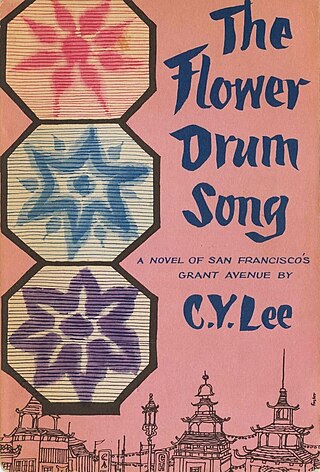
The Flower Drum Song is a novel by Chinese-American author C. Y. Lee, first published in 1957. The novel tells the story of Chinese immigrants in San Francisco, and was a bestseller in its time. It is the basis of 1958 musical Flower Drum Song, and later a movie of the same title was released in 1961, starring Nancy Kwan and James Shigeta.

Eat a Bowl of Tea is a 1961 novel by Louis Chu. It was the first Chinese American novel set in Chinese America. Because of its portrayal of the "bachelor society" in New York's Chinatown after World War II, it has become an important work in Asian American studies. It has been cited as an influence by such authors as Frank Chin and Maxine Hong Kingston. It was made into a film of the same name by Wayne Wang in 1989.

The Year of the Dragon is a play written by Chinese American playwright Frank Chin. It is one of the first plays by an Asian American playwright to be produced on a mainstream New York stage. It premiered in 1974 at the American Place Theatre, and starred Randall Duk Kim, who had played the lead in Chin's earlier play, The Chickencoop Chinaman. The rest of the cast included Pat Suzuki, Tina Chen, Conrad Yama, Lilah Kan, Doug Higgins, and Keenan Shimizu.
Ben Fee (张恨棠/木云) was an American writer and labor organizer who rose to prominence in the Chinatowns of San Francisco and New York in the mid-twentieth century. He was president of the Chinese Workers Mutual Aid Association and leader of the Chinese section of the United States Communist Party.

Tripmaster Monkey: His Fake Book is the third book written by Maxine Hong Kingston, and was published in 1989. The story follows Wittman Ah Sing, an American graduate of University of California, Berkeley of Chinese ancestry in his adventures about San Francisco during the 1960s. Heavily influenced by the Beat movement, and exhibiting many prototypical features of postmodernism, the book retains numerous themes, such as ethnicity and prejudice, addressed in Kingston's other works. The novel is rampant with allusions to pop-culture and literature, especially the 16th century Chinese novel Journey to the West.

Asian American literature is the body of literature produced in the United States by writers of Asian descent. Asian American literature became a category during the 1970s but didn't see a direct impact in viewership until later in the 1970s. Perhaps the earliest references to Asian American literature appeared with David Hsin-fu Wand's Asian American Heritage: An Anthology of Prose and Poetry, published in 1974. One of the earlier pieces of Asian American literature produced by Combined Asian American Resources Project (CARP) was Aiiieeeee! An Anthology of Asian-American Writers (1974). This anthology collected staples of long-forgotten Asian American literature and criticized the lack of visibility of this literature. This anthology brought to light the necessity of visibility and criticism of Asian American literature; with visibility came recognition of new literature. Elaine Kim's seminal book of criticism, Asian American Literature: An Introduction to the Writings and Their Social Context, was published in 1982 and was the first critical book on the topic.

Aiiieeeee! An Anthology of Asian-American Writers is a 1974 anthology by Frank Chin, Jeffery Paul Chan, Lawson Fusao Inada, and Shawn Wong, members of the Combined Asian American Resources Project (CARP). It helped establish Asian American Literature as a field by recovering and collecting representative selections from Chinese-, Japanese-, and Filipino-Americans from the past fifty years—many of whom had been mostly forgotten. This pan-Asian anthology included selections from Carlos Bulosan, Diana Chang, Louis Chu, Momoko Iko, Wallace Lin, Toshio Mori, John Okada, Oscar Peñaranda, Sam Tagatac, Hisaye Yamamoto, Wakako Yamauchi, many of whom are now staples in Asian American literature courses. Because of this anthology and the work of CARP, many of these authors have been republished; at that time, however, they received little attention from publishers critics because they didn't subscribe to popular stereotypes but depicted what Elaine H. Kim calls the "unstereotyped aspects of Asian American experience". The "aiiieeeee!" of the title comes from a stereotypical expression used by Asian characters in old movies, radio and television shows, comic books, etc. These same stereotypes affected the anthology itself: when the editors tried to find a publisher, they had to turn to a historically African-American press because, as Chin states:
The blacks were the first to take us seriously and sustained the spirit of many Asian American writers.... [I]t wasn't surprising to us that Howard University Press understood us and set out to publish our book with their first list. They liked our English we spoke [sic] and didn't accuse us of unwholesome literary devices.
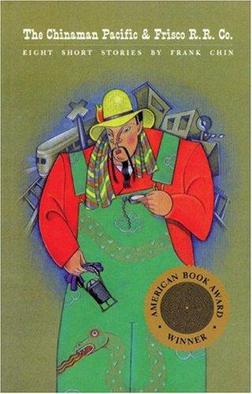
The Chinaman Pacific and Frisco R.R. Co. is a 1988 short-story collection by Frank Chin that collects many of the short stories he had published in the 1970s. It won the American Book Award. The collection deals with Chinese-American history by recalling the work of early Chinese immigrants in such jobs as "coolie, railworker and launderer".
The Chickencoop Chinaman is a 1972 play by Frank Chin. It was the first play written by an Asian American to have a major New York production.
Sexuality, including same-sex sexuality, and other non-normative forms of sexuality have been central to the history of Chinatown, San Francisco. San Francisco's Chinatown, founded in 1848, is the first and largest in the United States. San Francisco was shaped by early Chinese immigrants, who came from the Guangdong province of southern China. These immigrants gathered in the Bay Area in order to join in the California Gold Rush and to build railroads in the American west. San Francisco's Chinatown made room for these early Chinese immigrants to live, and the area turned into a "bachelor society", where female prostitution was pervasive because of the Chinese Exclusion Act. As a racialized immigration region, Chinatown was viewed as an immoral place with the characteristics of "vice", "sluttery" and "sexual deviance" for a long time. These traits were incompatible with the mainstream culture and dominant norms of American society. From the mid-19th century, the state problematized Chinese female prostitution with the subject of sexual transmission, and the government began to go against industrial prostitution in Chinatown, as well as Chinese immigration. As the sex industry grew throughout the Bay Area, the government had to stop the anti-prostitution and anti-immigration law in the beginning of the 20th century. Just like the Castro district and other areas, Chinatown developed its own sexual industries and provided a variety of sexual entertainment to both immigrants and white visitors.
People of Chinese descent have lived in Colorado since the mid-nineteenth century, when many immigrated from China for work. Chinese immigrants have made an undeniable impact on Colorado's history and culture. While the Chinese moved throughout the state, including building small communities on the Western Slope and establishing Chinatown, Denver, the presence of Chinese Coloradans diminished significantly due to violence and discriminatory policies. As of 2018, there were 45,273 Chinese Americans living in Colorado.


